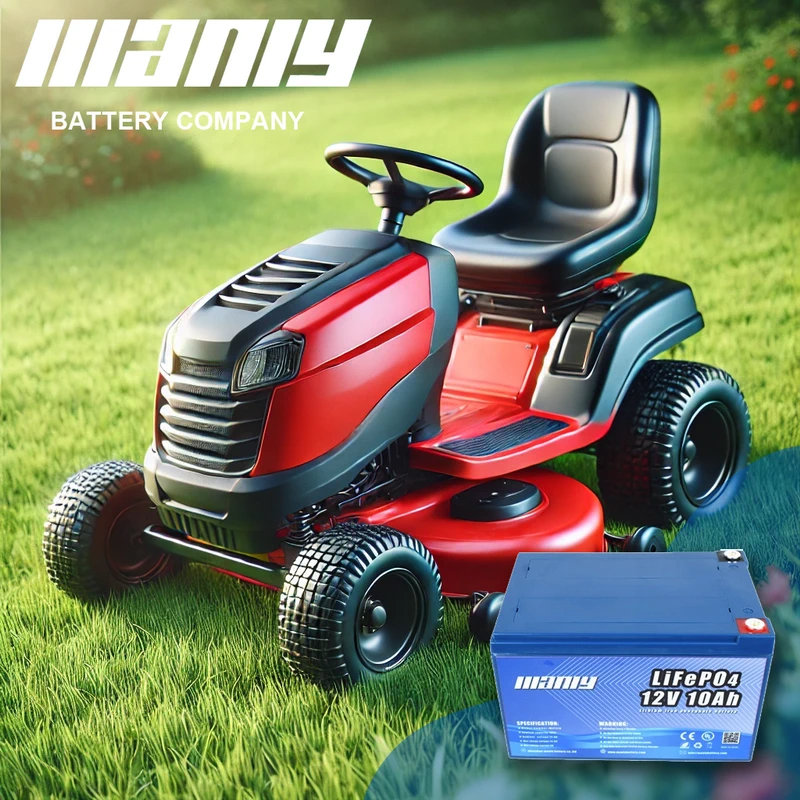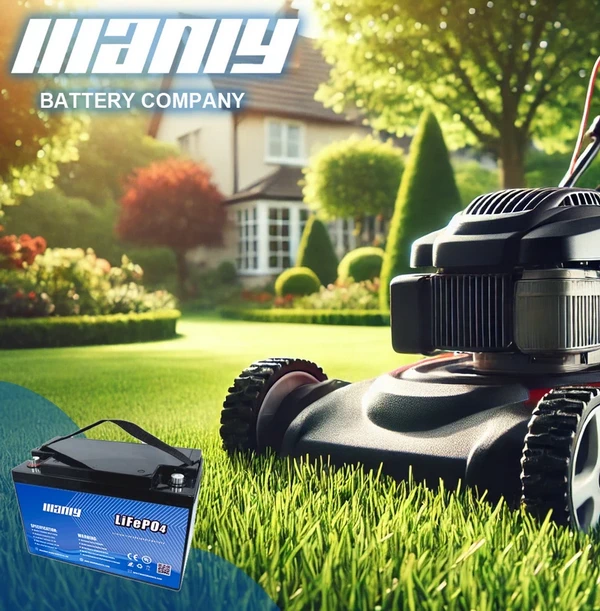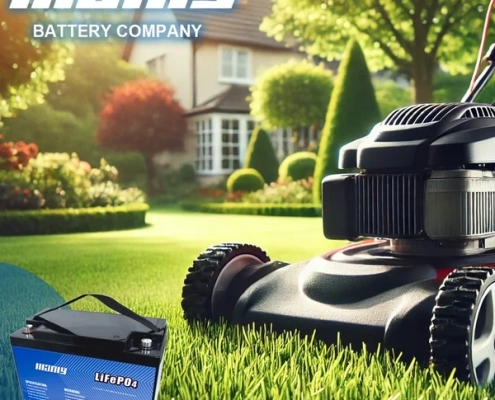How Many Amps are in a Lawn Mower Battery? Understanding Lawn Mower Batteries
Sommario
- How Many Amps are in a Lawn Mower Battery? Understanding Lawn Mower Batteries
Mowing the lawn is a chore most suburban homeowners must tackle on a weekly basis during spring, summer, and fall. Keeping your batteria del tosaerba charged and in good working order is crucial for being able to keep up with lawn care. But how much power do you really need to run your mower efficiently? This is where you need to know how many amps are in a lawn mower battery. Understanding lawn mower batteries can help you select the right one.
The Power Demands of a Lawn Mower
Unlike household appliances and electronic devices which often use lower voltage DC power, most electric start lawn mowers require a 12 volt battery to engage the starter motor and get the engine spinning. Gas mowers with electric starts have even higher short-term power demands during ignition, requiring up to 100 amps or more for a few seconds.
Fortunately, the actual continuous amp draw needed to keep a mower running is much lower once started, usually between 5 to 15 amps. Knowing these basic power demands can help guide your lawn mower battery purchase.
Common Lawn Mower Battery Types
The most popular lawn mower battery chemistry has traditionally been lead acid. Lead acid batteries provide high burst current and cranking power needed for ignition, while still being generally inexpensive. However, they are large, heavy, and have a shorter lifespan than newer lithium-ion alternatives.
Sealed lead acid (SLA) batteries offer a maintenance-free improvement over the old flooded lead acid style. But SLAs still require full discharges to prevent sulfation and can be damaged if left discharged for extended periods. Lifespans of 1-4 years are common even with proper care and charging.
Lithium-ion alternatives like LiFePO4 are increasing in popularity for mowers and other motor-powered equipment needing a compact, lightweight, durable power source.
Benefits of LiFePO4 Lawn Mower Batteries
Lithium iron phosphate (LiFePO4) batteries were originally developed for powering electric vehicles and power tools. But LiFePO4’s advantages make them well-suited for lawn equipment too:
- Lightweight – batterie LiFePO4 weigh up to 50% less than lead acid alternatives for a given power capacity. Reduced mower weight improves handling and reduces grass damage.
- Compact Size – Pound for pound, LiFePO4 batteries provide much more power density than lead acid, requiring less installed space.
- Fast Charging – LiFePO4 tolerates faster charge rates for less downtime between mowing sessions.
- Long Lifespan – Properly maintained LiFePO4 batteries can last over 5 times longer than lead acid, remaining usable for 5-10 years.
- Improved Safety – Lithium iron phosphate chemistry eliminates fire and explosion risks associated with other lithium battery types.
- Temperature Resistant – Low internal resistance allows LiFePO4 batteries to operate in hot and cold weather extremes without significant loss of runtime.
While LiFePO4 batteries can cost over 3 times more upfront compared to lead acid, their long working life, reduced weight, and reliable performance make them economical long-term – paying for themselves in lifespan and convenience.
How Many Amps Does a Lawn Mower Battery Need?
We’ve established that lawn mowers require up to 100 amps for several seconds during starting, dropping down to a continuous 5-15 amp draw to run. What size LiFePO4 battery will provide that reliably?
The critical specifications to understand when selecting your replacement mower battery are:
- Capacity (Amp-hours, or Ah)
- Maximum Discharge (rated output amps)
- Peak Output (for engine cranking needs)
Typical electric start mower batteries provide 20-35Ah. Higher capacities extend runtime. Choose the highest capacity your mowing needs and budget allows.
The battery’s maximum rated discharge current should meet or slightly exceed your mower’s continuous amp draw (check your manual). If unknown, a 50-60 amp discharge rating is recommended.
Finally, the battery’s temporary surge capability should handle lawn mower starting currents. 100 amps is usually sufficient.
With those criteria in mind, a lithium battery for a walk-behind mower might have these specifications:
- 25-30 Ah capacity
- 60 amp maximum discharge
- 120 amp peak output
While a larger riding mower battery could be sized like:
- 35-40 Ah capacity
- 80 amp maximum discharge
- 200+ amp peak output
This properly sized LiFePO4 battery would offer extended runtimes over the original lead acid battery, while providing the needed amperage for reliable starting and operation – all in a compact and lightweight package.
Extending LiFePO4 Battery Life
Once you’ve invested in a modern LiFePO4 mower battery, you’ll want it to last as long as possible. Follow these battery care tips to maximize lifespan:
- Limit Depth of Discharge
Avoid draining your LiFePO4 battery beyond 20% state of charge when possible. Shallow discharges reduce aging even in newer lithium battery chemistries.
- Don’t Leave Fully Discharged
Recharge as soon as practical if the battery becomes completely empty. Prolonged time at very low voltage can still accelerate wear.
- Recharge After Each Use
Top up your mower battery after every use to keep it freshest, rather than doing less frequent full charging cycles.
- Prevent Overcharging
Don’t leave LiFePO4 batteries continuously plugged into sketchy aftermarket chargers not designed for lithium. Use quality chargers that stop charging automatically to prevent cell damage from overvoltage.
- Store Correctly
Keep spare mower batteries between 40-80% charge if being stored for the off-season. Storing fully charged or empty both accelerate loss of capacity over time. Also store away from excessive heat.
- Monitor Voltage
Occasionally check your resting battery voltage after charging. A consistently decreasing voltage over time hints that a replacement battery will soon be needed.
With prudent care focused on avoiding battery abuse, modern LiFePO4 mower batteries can retain over 80% of original capacity after 5 seasons, delivering reliable starting and extended runtime year after year while avoiding the pitfalls of dated lead acid technology.
The Best Battery for Reliable Lawn Care
Caring for your home’s landscape is hard enough without having to deal with the headaches of a dying mower battery. Upgrading to a LiFePO4 replacement battery can make lawn maintenance less chores while adding life and performance to your mower. Their unmatched combination of safety, long lifespan, light weight, and peak power perfectly matches the needs of electric start mowers large and small.
Ditch lead acid this season and make LiFePO4 power your new secret weapon for an always-ready mower and a healthier lawn. We at Manly Battery can help you with finding the right LiFePO4 battery for your lawn mower. Feel free to take a look at the collection today and get yours.
FAQ
1. Is a lawn mower battery 6 amp or 12 amp?
Lawn mower batteries aren’t usually rated “in amps” but by their capacity in amp‑hours (Ah) and their voltage. Most small mowers use 12‑volt batteries that might be rated at 6Ah or 12Ah. In other words, a “6Ah battery” versus a “12Ah battery” means the 12Ah version can deliver twice the energy over time. The right choice depends on your mower’s starting requirements and power demands—check your owner’s manual to be sure.
2. How many amps is good for a lawn mower?
Quando discutono di "amplificatori" per una batteria, molte persone si riferiscono davvero a due cose: la capacità dell'amp -ora della batteria (AH) e i suoi freddi amplificatori di crank (CCA). Per la maggior parte dei tosaerba, una batteria con un CCA nella gamma di circa 145-300 è sufficiente per avviare il motore in modo affidabile, anche nei giorni più freddi. Per la capacità, molti falciatrici residenziali funzionano bene con le batterie classificate tra 6ah e 12ah. Il manuale del tuo tosaerba è la migliore guida per soddisfare le sue esigenze elettriche.
3. What is the Ah of a lawn mower battery?
La valutazione AMP -Hour (AH) ti dice per quanto tempo una batteria può fornire una determinata corrente. Le batterie comuni di tosaerba per macchine più piccole o di medie dimensioni sono disponibili in capacità da circa 6ah a 12ah, mentre alcuni tosaerba più grandi o di equitazione potrebbero utilizzare batterie con valutazioni AH significativamente più alte. Ad esempio, una batteria da 12 ah può teoricamente fornire 12 amp per un'ora o 1 amp per 12 ore prima di aver bisogno di una ricarica.







